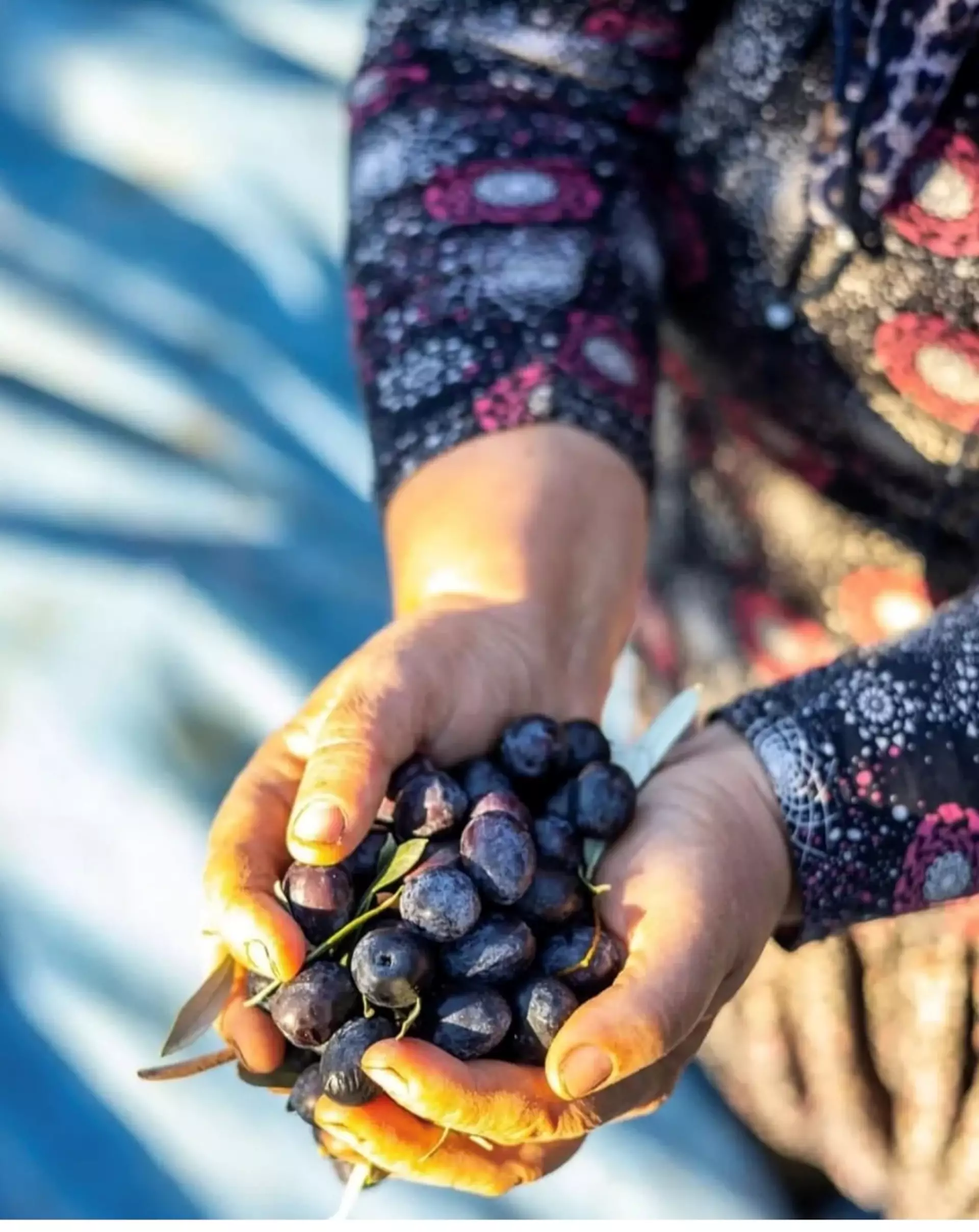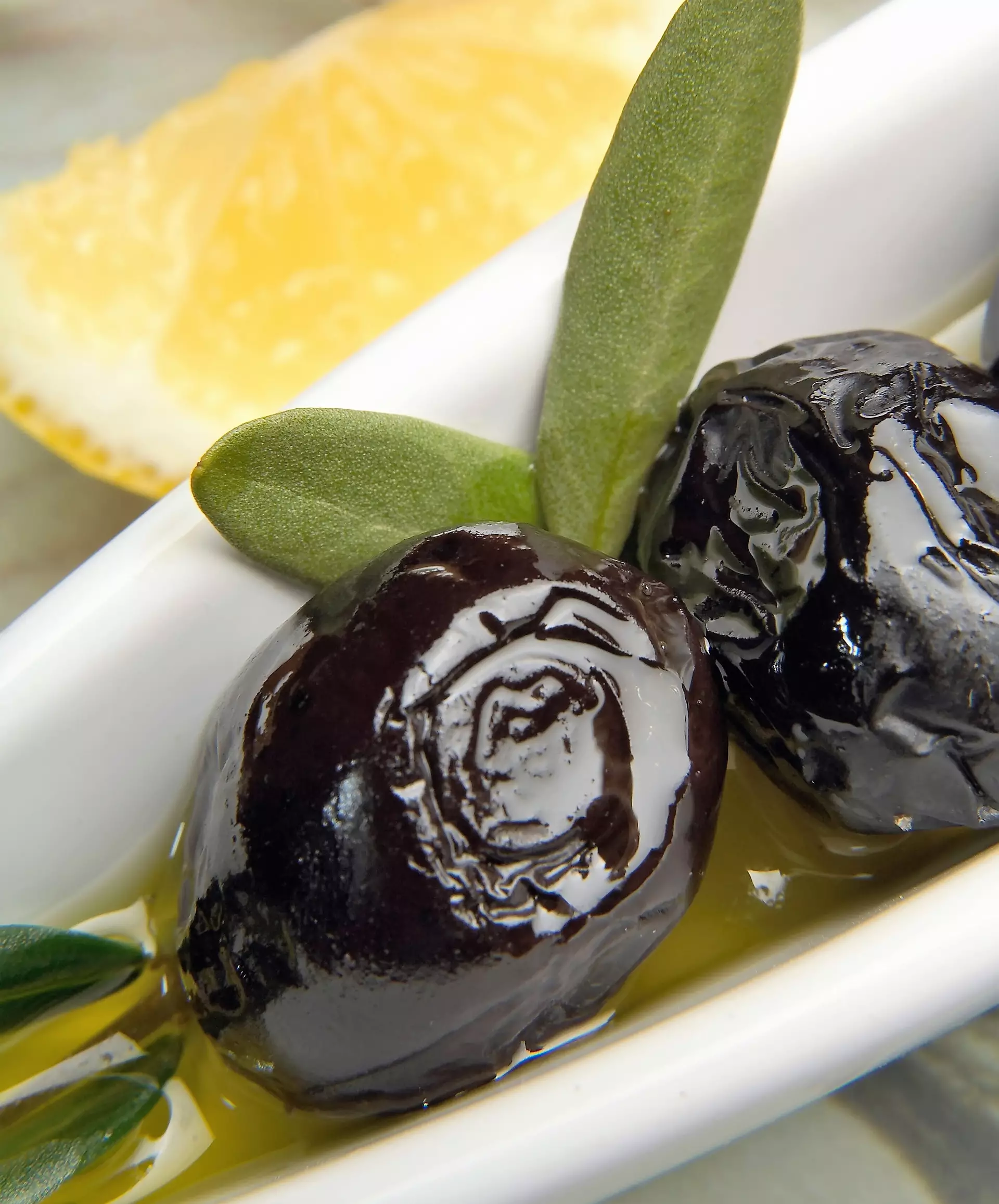Blog 4.04.2024
Table Black Olive Production

Olives should be harvested when the grain turns black and the flesh turns violet purple. Harvest is an important factor affecting the quality of table black olives. Olives harvested early are not dark black in color; their color ranges from red to black. Especially in Gemlik black olives, the color of the olives harvested at maturity is in black tones. Harvesting should not be done all at once, but by collecting those that have reached maturity in batches. The collected olives are transported to the facility in 20-25 kg plastic crates that are not too deep and do not damage the olives.
2. Sorting and sorting: Olives brought to the pickling plant are processed through grading and sorting. If the olive is very ripe, it is only sorted. The grading process can also be done after the olives are sweetened. The purpose of sizing here is; The purpose of sorting is to separate small-grained oil olives; It is the separation of injured, bruised, diseased and soft olives from healthy olives. 3. Washing: Before the olives are placed in the fermentation tanks, they are washed to remove dust, soil and mud. 4. Pickling and fermentation: We can briefly examine the methods used in flavoring black olives as follows. I-Gemlik method: This method has been applied in our country for centuries. The brine is prepared in advance and water is added to the olives, thus quality table olives are obtained. In this method, olives can be placed in brine in concrete, polyethylene, polyester and fiberglass tanks. However, no matter what type of material the brine tanks are made of, their height should be around 2 m, and the height of the olives to be placed in them should not exceed 1.80 meters. Salt water prepared as 10 bome (10% brine) is applied to the olives, pressed and the olives are left in the brine.
The brine should completely cover the olive grains. There should be no air gap between the top cover and the liquid surface. After the olives are placed in the brine, salt transfer from the brine to the grain begins and the bome drops to 5-6. The salt of the brine should be checked frequently with the Bome areometer and the salt should be added as it decreases. The salt level of the brine should be kept at 10 bome. Fermentation begins after 2-3 days in olives placed in brine. In order for the fermentation to proceed smoothly, 1-2% of good brine or lactic acid from the previous year can be added to the brine. During fermentation, the sugars in olive grains are converted into lactic acid by lactic acid bacteria. The lactic acid formed preserves the olives without spoiling. For good preservation, the brine should contain 0.9% lactic acid. - In the months when the weather gets warmer, the salt level can be increased to 12-13 to prevent the olives from spoiling. - During fermentation, the yeast and molds formed on the upper surface of the brine must be cleaned, the circulation of the brine, salt and acidity controls must be carried out. The most suitable fermentation temperature is around 20°C, in other words room temperature. Therefore, if possible, the brine temperature should be kept at this level for the first 2-3 weeks.
Since the time when olives are put in brine in our country coincides with the winter months, fermentation continues slowly due to low temperatures and is completed only in the summer months. Thus, olives prepared with this method reach eating maturity in 6-9 months. II - Sele Olive: In this method, olive grains are harvested after they have darkened and matured on the tree. Sound olives are cleaned, washed and a layer of salt and a layer of olives are stacked in saddles, drums or wooden boxes, 15 kg of coarse salt for 100 kg of olives. The mouth of the container is closed appropriately. The containers are turned upside down, left and right, every few days to ensure that the grains come into good contact with the salt. The grains release their water under the influence of salt. In this way, within 3-4 weeks, the bitterness of the olives will gradually be overcome. III - Making black olives by adding air: By adding air to the brine, the amount of oxygen in the environment is increased and the acidity caused by microorganisms developing in the air environment and the bitterness in the olives disappear. In this way, the olives become sweet in a short time, like 3-4 months. The olives flavored with this method are black in color and harder in texture. IV - Quick method (Confit type) olive production: In this method, olives are placed in one-ton tanks to remove their bitterness. 1.5-2% lye solution is applied over it.
When it penetrates 3/4 of the olive flesh, the unwanted bitterness of the olive disappears and the lye solution is drained. The container is filled with water, the washing process is repeated 4 times and the olives are ventilated. Meanwhile, the color of the olives turns black. After this process, the olives are treated with ferrogluconate or ferrolactac to ensure that the black color is fixed. Olives are fermented by keeping them in 10-12 bomeli salt water for about 1.5 months. Olives prepared in this type are placed in a low-salt packaging brine or pasteurized or sterilized. If there is no possibility of heat treatment, it is put on the market in a 10-bome package of brine prepared by adding preservatives and having a pH of 4.2-4.5. V - Tin Olives: In this method, 15 kg lacquered tins are used as containers. After 10 kg of ripe olives are filled into tins with 1 kg of medium-sized salt, ensuring that the salt is distributed among the grains, 1 kg of olive oil is added and the lid of the tin is closed. The cans are placed in a cool place and turned upside down every 2-3 days.
The bitterness of the olives disappears in a short time due to osmosis caused by salt and fermentation in a closed container. VI - Kalamata Olives: In this method, the grains are placed in tanks filled with water or in brine containing 2-3% salt to remove the bitterness of the olives in a short time. The water or brine is changed every day or every other day until the bitterness of the olives disappears. Bitterness disappears in 1-4 weeks depending on the frequency of water changes. The bitter olives are left in vinegar for 1-2 days, or to prevent loss of vinegar, vinegar is added along with 8-10% brine to give the necessary sourness and taste. Sliced lemon, olive oil and bay leaves are also added to Kalamata olives, which are usually marketed in lacquered tin cans in 8% brine. In another preparation method of Kalamata olives, the grains are scratched. VII - Booted Olives: Olive varieties with hard flesh are used. Olive grains are drawn in three places along its length and up to half of the flesh. The scratched olives are filled into containers filled with water and the water is changed every day or every other day. This process continues until the bitterness disappears (15-30 days). The bitter olives are placed in 8-10% brine and left for 8-10 days. At the end of this period, the olives are packaged in tins with 5-8% brine, 1% citric acid, some olive oil, lemon slices, aromatizing substances such as garlic and mustard. The containers are completely filled with brine and sealed. Olives are marketed after being kept in packaging containers for 8-10 days.



